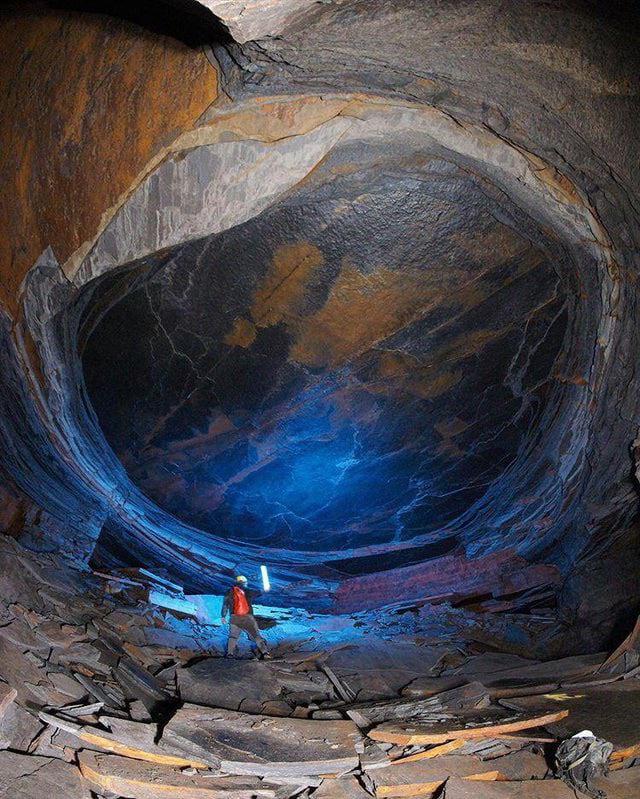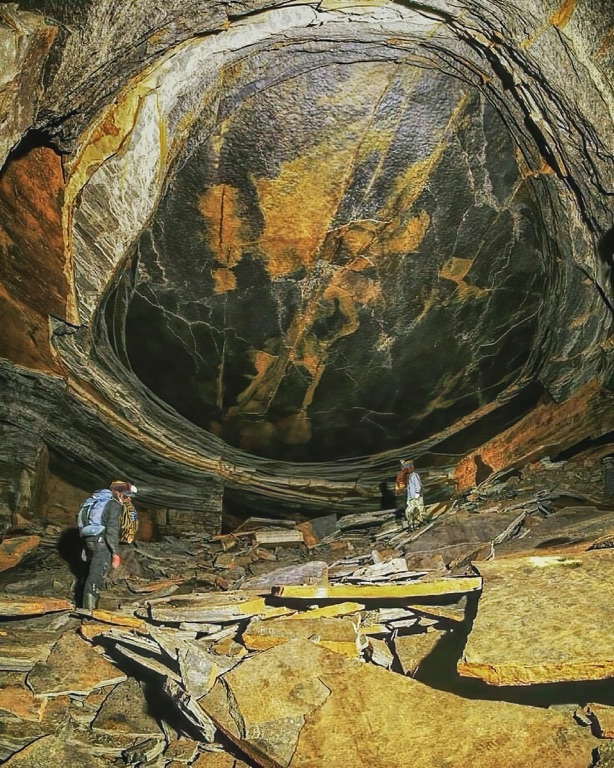Dragon’s Eye Cave in Upholland, West Lancashire
In the rural landscapes of West Lancashire, specifically in Upholland, lies a hidden geological marvel known as the Dragon’s Eye cave. This site, shrouded in secrecy and protected by local residents, is accessible only through an unconventional entrance – a ‘window in the floor’. The cave’s exact location remains a closely guarded secret, shared among a select group of urban explorers and vigilant locals.
Get your dose of History via Email
Geological Formation and the Dragon’s Eye
The Dragon’s Eye cave is believed to have originated from an old mine shaft. At the heart of this subterranean wonder is the ‘dragon’s eye’, a natural formation that captivates the imagination. This feature, resembling a spherical eye, is created by a unique pattern in the rock that becomes particularly striking when illuminated under specific conditions. The illusion of the dragon’s eye is thought to be the result of the mine’s roof collapsing, exposing the intricate patterns and colors of the sediment layers beneath.
Discovery and Exploration
Despite its allure, locating the dragon’s eye within the cave is not straightforward. An anonymous urban explorer from Merseyside recounted nearly missing the eye, emphasizing the necessity of precise lighting and positioning to capture its essence. The cave itself is a complex network of caverns and tunnels, a testament to its mining origins.

Dan Dixon, an urban explorer with a significant following on his YouTube channel ‘exploring with fighters’, has successfully visited the Dragon’s Eye cave twice. Having explored numerous abandoned and hidden locations worldwide, Dixon ranks the Dragon’s Eye among his top three discoveries. His experiences underscore the cave’s unique appeal, juxtaposed against global landmarks such as Battleship Island in Japan and Dracula’s Castle.
Preservation and Safety Concerns
The local community’s efforts to conceal the cave’s location stem from concerns over safety and preservation. The area surrounding the Dragon’s Eye is fraught with hazards, particularly for the uninitiated or young explorers. The cave’s geological stability is compromised by the collapsed mine roof, a condition that has prompted measures to seal off the site to prevent accidents.
The formation of the dragon’s eye, resulting from the collapsed roof exposing varied sediment colors, is a geological phenomenon that underscores the cave’s historical and natural significance. Despite these efforts, the allure of the Dragon’s Eye cave persists, captivating the imagination of those who hear of its existence.
Conclusion
The Dragon’s Eye cave in Upholland remains an enigmatic treasure of the West Lancashire countryside. Its hidden location and the mystical appearance of the dragon’s eye continue to intrigue urban explorers and locals alike. While the cave’s accessibility is restricted to ensure safety and preservation, its existence is a fascinating reminder of the natural and historical wonders that lie just beneath the surface, waiting to be discovered.
Sources:
Lancs Live
Image Source
Image Source

